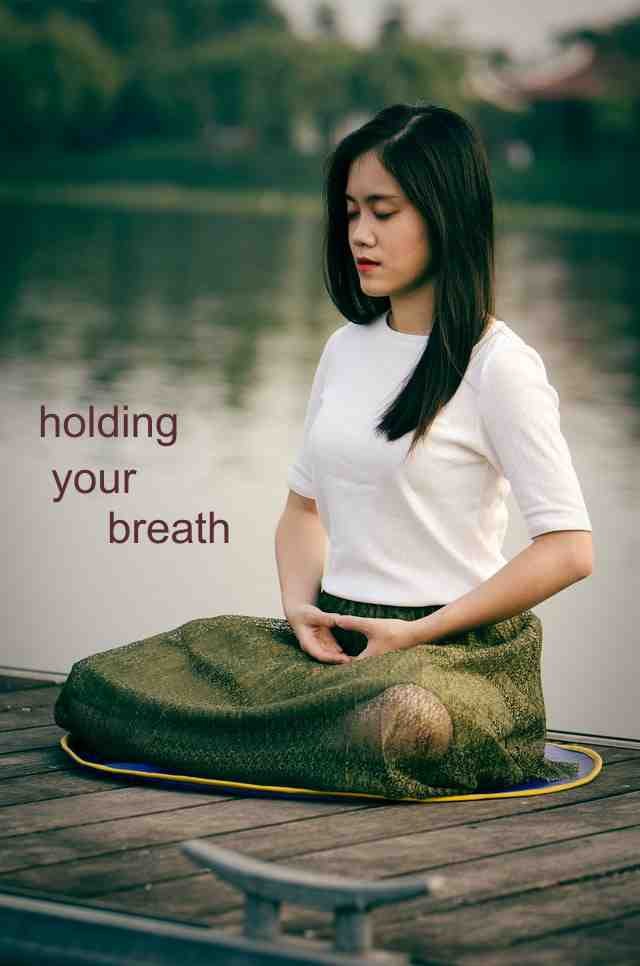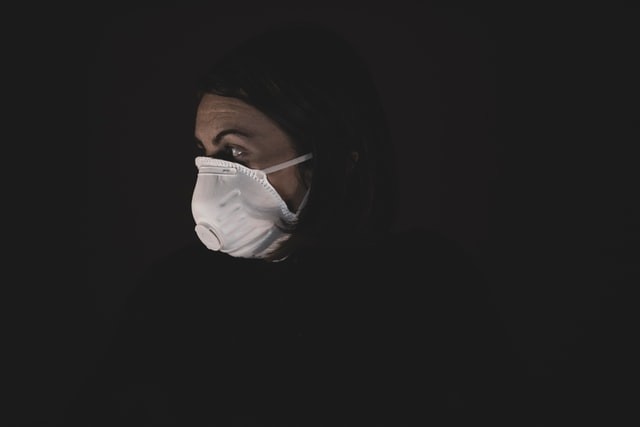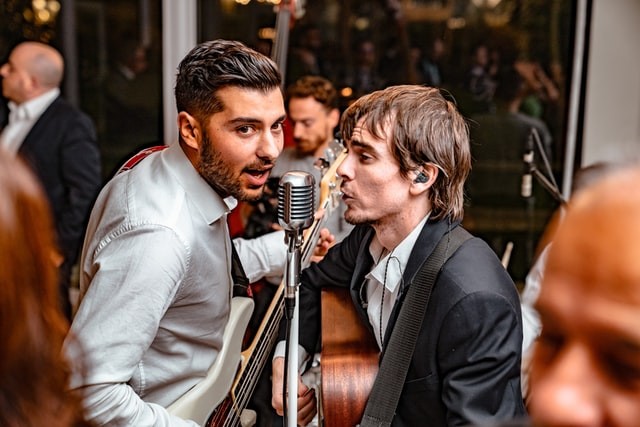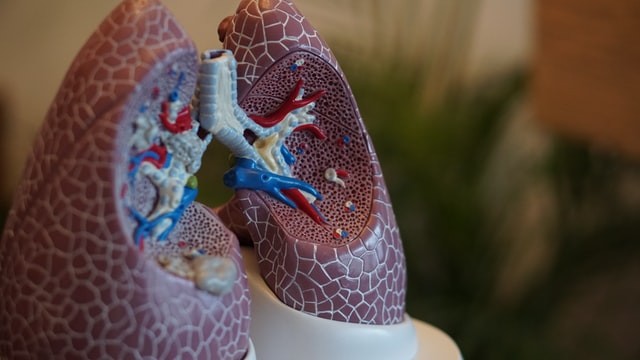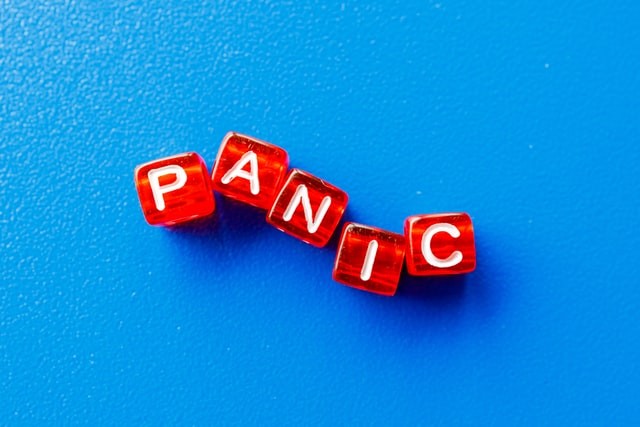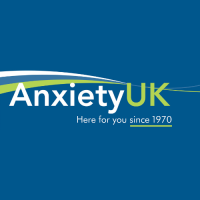Breathing Techniques
What does it mean to be human ?
Every day, you take 23,000 breaths and your heart beats 100,000 times.
Humans are capable of more complex thoughts and emotions than any other animal on the planet.
For life to survive : temperature, acidity, oxygen concentration must be precisely controlled.
We are different to other species, we have to maintain precise body conditions in every single one of the trillion cells that makes us.
This is homeostasis.
Photo by Fabian Møller on Unsplash
Photo by Yoann Boyer on Unsplash
Would you jump into the water to save a child from drowning ? Yes, more than likely but what about if it was freezing icy water ?
Icy water threatens homeostasis, gasping for breath, heart racing and skin blood vessels can struggle in a desperate attempt to reduce heat loss. Uncontrollable shivering can push our bodies into overdrive producing extra heat to try and keep our core temperature. Your body produces dangerous by products including carbon dioxide (Co2). As Co2 floods the body, it risks increasing acidity of the blood. Too acidic blood runs the risk of severe long lasting damage, even fatality.
Photo by Vidar Nordli-Mathisen on Unsplash
Freezing water triggers adrenaline that surges through your body to maintain core temperature of 37 degrees.Adrenaline stimulates cells to generate heat. However, you experience "cold water shock", you cannot feel your fingers, you cannot breath There is a cost – the cold water shock can knock your internal chemistry out of balance. Life event dangers or threats, big or small, our bodies must do this for every second of every day, of every year of our lives.
You may survive up to three weeks without food. You can last without water for a few days depending on the circumstances but how long can you live without breathing ?
Photo by Le Minh Phuong on Unsplash
Most people can hold their breath for somewhere between 30 seconds and2 minutes. The world record for holding your breath is held by Aleix Segura Vendrell of 24 minutes in February 2016. Here's what happens when you hold your breath. (healthline.com)
- Up to 30 seconds : You might feel relaxed, able to tune out the world around you.
- Between 30 seconds and 2 minutes. You can learn to slow your breathing and increase intake during inhalation. CO₂ is building up in your blood from not exhaling.
- Between 2 and 3 minutes. Your stomach starts to rapidly convulse and contract, because your diaphragm is trying to force you to take a breath.
- Between 3 and 5 minutes You will feel lightheaded, as CO₂builds to danger levels, reducing the amount of oxygenated blood reaching your brain.
- Between 5 and 6 minutes your body will uncontrollably contract. Beyond 6 minutes and you will black out. Your brain desperately needs oxygen, so it knocks you unconscious so your automatic breathing mechanisms will kick back in.
You are trying to save a child, but go underwater. At this "6 minute danger point" you'll probably inhale water into your lungs. Breathing in water can be dangerous or fatal.
But what about breathing out ?
Photo by engin akyurt on Unsplash
The Covid 19 virus can transmit to others when you speak, sing or breathe. Wearing a well-fitting three-layer mask helps protect others. The simple act of breathing has contributed to the global pandemic and economic melt down.
But can exhaling your breath have positive benefits ?
Photo by Lindsey Bahia on Unsplash
The same breath you expel can also save lives. Instead of a child drowning, you see a person who has collapsed at work. A suspected heart attack : they are unconscious and not breathing. As a trained first aider you can respond with CPR "with rescue breaths". You continue with cycles of 30 chest compressions and 2 rescue breaths until they begin to recover or emergency help arrives. (NHS)
Research has shown that singing can be good for you on many levels. It may help lower stress, boost immunity and lung function, enhance memory, improve mental health, and help you cope with physical and emotional pain. Breathing well will support your voice. Singing when there's no breath left is a common way of tiring your voice. Here is a 6 stage singing breathing technique (BBC)
1.Breathe deeply from your lower lungs.
2.imagine a rubber ring around your waist (your diaphragm)
3.Breathe in and try to push the ring outwards.
4.Breathe in through your nose and out through your nose and mouth.
5.Avoid raising your shoulders as you breathe in
6.keep them relaxed and level.
To practice breathing well, try this:
1.Lie on the floor on your back with your hands on your stomach.
2.Breath in (inhale) and your hands will rise.
3.Now breathe out (exhale) and they will lower. In this position it is virtually impossible to breathe incorrectly.
4.Try to breath in the same way when you sing.
Practice breathing regularly to improve your technique and build your capacity
Photo by Robina Weermeijer on Unsplash
Breathing is central to life. It allows the human body to obtain the energy it needs to sustain itself and its activities. But how does it work? Chest muscles move upwards and outwards. The diaphragm (a muscle under the lungs) moves down. This makes more space for the lungs which fill up with air from the mouth and nose. The air moves through tubes in the lungs to tiny air sacs called alveoli. Oxygen passes from these into the blood, which carries the oxygen to all the cells in the body. (BBC)
What happens when we breathe out?
Think of your respiratory tract as an upside-down tree. The trunk is your windpipe. It splits into smaller and smaller branches in your lungs. At the end of each branch are tiny air sacs called alveoli. The tiny air sacs alveoli absorb carbon dioxide from the blood. When we breathe out, the chest muscles move down and inwards. The diaphragm moves up. This squeezes the lungs and forces air out. Carbon dioxide from the alveoli flows up through the lungs and out through the mouth and nose.
Breathing is a natural thing: we breathe in, breathe out. Not something we are aware of, it just happens ? There actually is a wrong and right way to get oxygen into your system through your lungs called natural breathing). (American Lung Association)
Use Your Nose : There are two ways to breathe - through your mouth and your nose, but the nostrils filter, warm and humidify air in a way that the mouth cannot.
Use Your Belly: Proper breathing starts in the nose and then moves to the stomach as your diaphragm contracts, the belly expands and your lungs fill with air. It is the most efficient way to breathe.
Natural Breathing, (abdominal breathing), is a good way to breathe all day long, unless you are involved in strenuous physical activity. Breathing this way all day long, provides for sufficient oxygen intake and controls the exhalation of carbon dioxide. It's very simple and it goes like this: (https://anxieties.com/136/gad-step3a/)
1.Gently and slowly inhale a normal amount of air through your nose, filling only your lower lungs. (Your stomach will expand while your upper chest remains still.)
2.Exhale easily.
3.Continue this gentle breathing pattern with a relaxed attitude, concentrating on filling only the lower lungs.
This breathing technique is opposite of automatically what happens during anxious moments. Instead of when anxious, breathing rapidly and shallowly into the upper lungs, which expands your chest, you naturally breathe gently into your lower lungs, expanding the abdomen.
Photo by Noah Buscher on Unsplash
The purpose of breathing is not just a biological function to keep us alive.
- We use power breathing to shout and express our angry feelings.
- We scream to release bottled up feelings
- Our breath allows us to speak and communicate with others.
Breathing is important in moderate exercise. (NHS) Moderate activity will raise your heart rate, and make you breathe faster and feel warmer. One way to tell if you're working at a moderate intensity level is if you can still talk, but not sing. In vigorous exercise you can experience shortness of breath.
Anxiety can both cause and make worse shortness of breath. When experiencing a change in your breathing pattern during a panic attack. You are gasping for air. Your breathing feels shallow and restricted. Your breathing pace is quicker than usual. You can't slow your rapid breathing down. You feel as if you are choking or being suffocated (very well mind)
Another breathing technique is deep diaphragmatic breathing. It can be used during times when you are feeling anxious or panicky. It is a powerful way to control hyperventilation, slow a rapid heartbeat and promote physical comfort. It is the Calming Breath method. (American Lung Association). Here's how it goes:
- Take a long, slow breath in through your nose, first filling your lower lungs, then your upper lungs.
- Hold your breath to the count of "three."
- Exhale slowly through pursed lips, while you relax the muscles in your face, jaw, shoulders, and stomach.
Practice this Calming Breath technique at least ten times a day for several weeks. Use itwhenever you want to let go of tension and begin to experience a sense of calmness. This will help you become familiar and comfortable with the process. Use it any time you begin to feel anxiety or panic building. When you need a tool to help you calm down during panic, you will be more familiar and comfortable with the process.
Photo by Andrey Metelev on Unsplash
What is hyperventilation ?
Hyperventilation means breathing in more than your body requires. Usually we automatically are in "breathing homeostasis". We make minor breathing adjustments to match our physical needs. You are 'over-breathing' when your breaths are rapid and you inhale deeply. Over-breathing is common during panic attacks. Some over-breathing is part of the body's normal response to threat. It supplies the muscles with more oxygen so that the body is ready to face the threat or to run away. When you begin to over-breathe, the balance of gases in the lungs is upset. A small amount of carbon dioxide normally stays in the lungs. If you breathe in too much air too often, the carbon dioxide is pushed out. These reactions are caused by too little carbon dioxide. They are very frightening in themselves, and can lead to more over-breathing. This is known as the vicious circle of hyperventilation. (http://www.nhsborders.scot.nhs.uk/media/213548/Hyperventilation.pdf)
Pursed lip breathing. This simple breathing technique makes you slow down your pace of breathing by having you apply deliberate effort in each breath. (Healthline)
You can practice pursed lip breathing at any time. It can also be useful during activities such as bending, lifting, or stair climbing. Practice using this breath technique 4 to 5 times a day when you begin in order to correctly learn the breathing pattern. To do it:
1.Relax your neck and shoulders.
2.Keeping your mouth closed, inhale slowly through your nose for 2 counts.
3.Pucker or purse your lips as though you were going to whistle.
4.Exhale slowly by blowing air through your pursed lips for a count of 4.
Box breathing is a powerful, yet simple, relaxation technique that aims to return breathing to its normal rhythm. The technique is also known as "resetting your breath" or "four-square breathing". It is easy to do, quick to learn, and can be a highly effective technique for people in stressful situations. Before starting, people should sit with their back supported in a comfortable chair and their feet on the floor.
1.Close your eyes.
2.Breathe in through your nose while counting to four slowly. Feel the air enter your lungs.
3.Hold your breath inside while counting slowly to four. Try not to clamp your mouth or nose shut. Simply avoid inhaling or exhaling for 4 seconds.
4.Begin to slowly exhale for 4 seconds.
5.Repeat steps 1 to 3 at least three times.
6.Ideally, repeat the three steps for 4 minutes, or until calm returns.
Anxiety UK suggests practising the "Apple" technique to deal with anxiety and worries.
Acknowledge: Notice and acknowledge negative worry thoughts as it comes to your mind.
Pause: Don't react as you normally do. Don't react at all. Just pause in the moment and focus on your breathing.
Pull back: Now tell yourself this is just the worry talking. It is only a thought or feeling about what might happen in the future. Don't believe everything you think. Thoughts are not statements or facts. Nor are they accurate predictions of what disasters might happen to you. Keep a focus on your breathing.
Let go: Let go of the thought or feeling. All thoughts will pass. You don't have to respond to them. You might imagine them floating away in a bubble or cloud. This technique is called "cognitive diffusion".
Explore: Explore the present moment, because right now, in this moment, all is well.Notice your breathing and the sensations of your breathing.Look around and notice what you see, what you hear, what you can touch, what you can smell.Right now.Then shift your focus of attention to something else - on what you need to do, on what you were doing before you noticed the worry, or do something else - mindfully with your full attention.
Michelle Ayres and Carol Vivyan, are Cognitive Behavioural Psychotherapists, with a background in mental health nursing, from Guernsey, Channel Islands. They developed The Decider Skills based on their own clinical experience in mental health. The aim was to reduce impulsivity whilst increasing resilience, coping and confidence, by learning 32 evidence-based skills. One of those 32 skills is the "Breathe" skill.
The 'Breathe' skill can help you reduce distressing physical sensations. It is important to learn to be aware of our breathing, to breathe mindfully.Mindful breathing is simply a calm, non-judging awareness, allowing thoughts and feelings to come and go without getting caught up in them. You can do this technique for a few minutes. It combines a simple breathing technique with a "safe visualisation" technique. Below is a taste of this technique. For the full details, go to their website. (https://www.thedecider.org.uk/).
Bring your attention to your breathing.
Imagine that you have a balloon in your tummy. Every time you breathe in, the balloon inflates.
Notice the sensations in your abdomen as the balloon inflates and deflates. Your abdomen rising with the in-breath, and falling with the out-breath.
Photo by Meghan Hessler on Unsplash
Breathing techniques are an essential aspect of relaxation training for anxiety. A review paper looked at four types. (Manzoni 2008). Relaxation training is particularly relevant for anxiety, and is often taught either as a stand-alone treatment or alongside medication and/or therapy.
Progressive muscle relaxation, is when you gradually tense and release different groups of muscles in your body.
Autogenic training, is a series of six steps which aims to achieve muscle relaxation through repetition of a series of phrases, such as `my right arm is heavy'.
Applied relaxation, is a broader programme that encompasses progressive muscle relaxation and encourages individuals to relax their body during daily activities.
Meditation, which includes mindfulness.
They found that all four types can be helpful. For some people, learning to control their stress is all they can hope for if they can't overcome it completely. You can use simple breathing techniques to calm your mind and reduce muscle tension.
You should try to set aside 30 minutes, 2 or 3 times each day to practice these techniques.The more you practice, the better you will get and the more effective they will be. It's important to keep using these techniques, even if you don't feel better straight away.It will take time and regular practice before you start to feel the benefits.
An example of breathing technique in combination with muscle relaxation is Quick muscle relaxation "Sitting in a comfortable chair".
This exercise will teach you to recognise and reduce muscle tension. You can relieve tension in any part of your body just by tensing and relaxing each muscle in turn.
- Close your eyes and concentrate on your breathing.
- Slowly breath in through your nose and out through your mouth
- Make a fist, squeezing your hand tightly hold this for a few seconds, noticing the tension.
- Slowly open your fingers and feel the difference — notice the tension leaving.
- Your hand is much lighter and relaxed
Enjoy this feeling !
Comments
By accepting you will be accessing a service provided by a third-party external to https://www.flashinglightbulb.co.uk/




